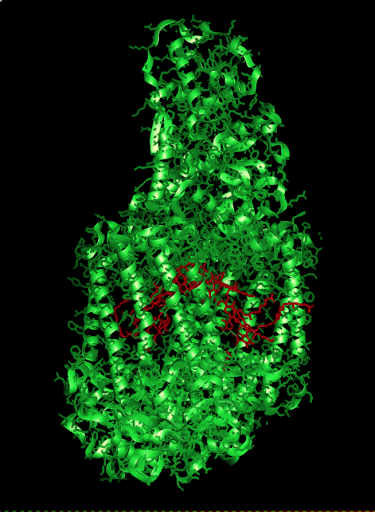Plants and photosynthetic bacteria store energy through a series of electron transfer reactions initiated by photoexcitation of a special chlorophyll dimer, leading eventually to reduction of a quinone on the opposite side of the membrane. In spite of extensive experimental and theoretical efforts in the last decade, the role of the accessory bacteriochlorophyll in the early stages of the process has been the subject of significant controversy.
We have performed accurate quantum mechanical simulations of the primary charge transfer in photosynthetic reaction centers. The process was modeled by three coupled electronic states corresponding to the photoexcited special chlorophyll pair (donor), the reduced bacteriopheophytin (acceptor) and the reduced accessory chlorophyll (bridge) that interact with a dissipative medium of protein and solvent degrees of freedom whose spectral density was obtained from classical simulations. Fixing the energies of the donor and acceptor states at the experimentally known values and varying the free energy of the bridge we have performed long-time simulations of the charge transfer dynamics and compared to experimental results on wild-type and modified reaction centers.
The time evolution of these three electronic state populations in wild-type and modified reaction centers was followed over 17 ps using our iterative path integral scheme. Agreement with experimental observations of significant long-lived population in certain modified reaction centers is observed if the bridge free energy is about 400 wavenumbers lower than that of the excited special pair. The bacteriochlorophyll monomer appears to be involved as a true intermediate in a two-step process which is well approximated by kinetic equations. This picture reproduces the observed temperature dependence and is consistent with kinetic data on various mutants. We have verified that the observed population kinetics are qualitatively insensitive with respect to reasonable variation of the coupling parameters.
Related Articles:
- E. Sim and N. Makri, “Path integral simulation of charge transfer dynamics in photosynthetic reaction centers”, J. Phys. Chem. B 101, 5446-5458 (1997).
- N. Makri, E. Sim, D. E. Makarov and M. Topaler, “Long-time quantum simulation of the primary charge separation in bacterial photosynthesis”, Proc. Natl. Acad. Sci. U.S.A. 93, 3926-3931 (1996).
